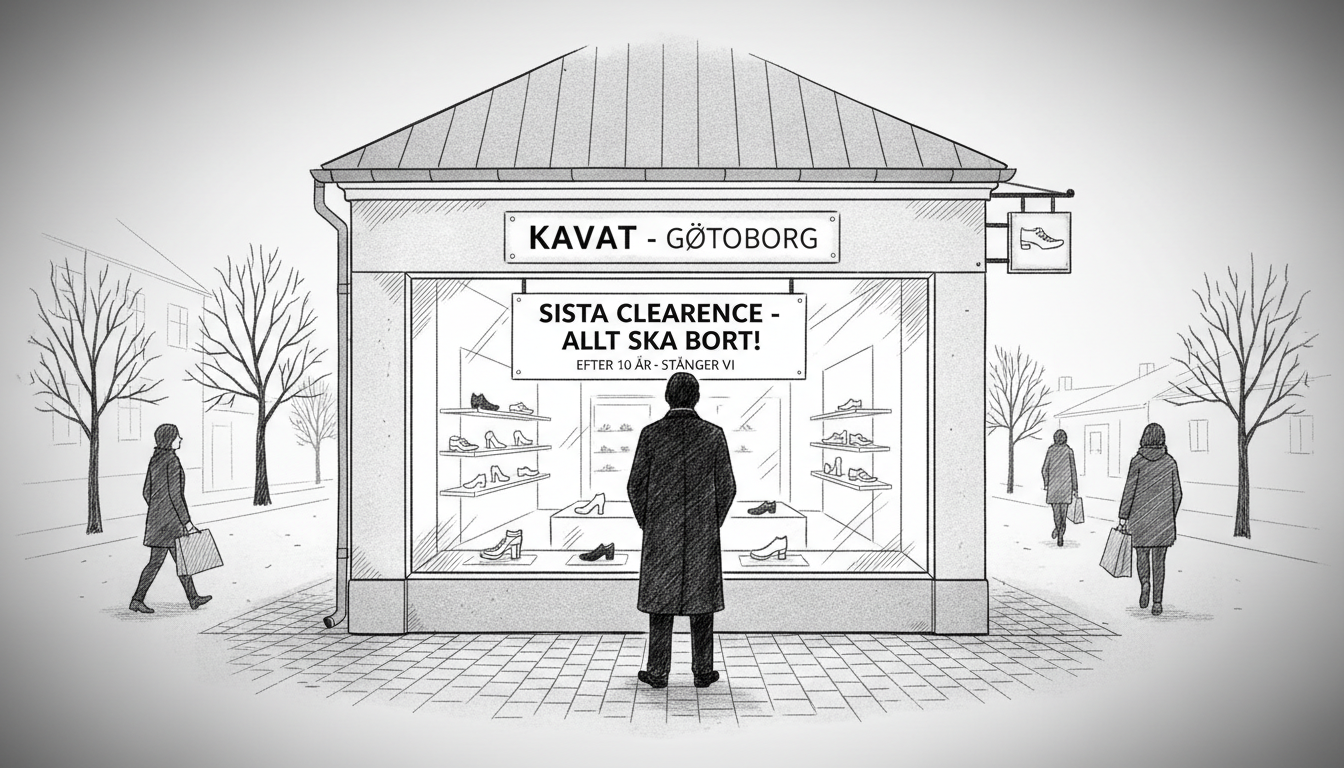The classic Swedish shoe brand Kavat will close its Gothenburg store after more than ten years in the city. The company cites increased online shoe shopping as the primary reason for the closure. Kavat will hold a clearance sale to liquidate all remaining inventory before shutting its doors permanently.
This closure reflects broader retail trends affecting traditional brick-and-mortar stores across Sweden. Many Swedish consumers now prefer the convenience of online shopping for footwear. The shift has accelerated in recent years as e-commerce platforms improve their selection and delivery speed.
Kavat represents a piece of Swedish heritage with its focus on durable, practical footwear. The brand has maintained popularity among Swedes who value quality and functionality. Their closure in Gothenburg marks another traditional retailer succumbing to digital transformation pressures.
The Gothenburg location served customers in Sweden's second-largest city for over a decade. Local shoppers now face reduced options for trying on quality Swedish shoes in person. The store closure may particularly affect older customers less comfortable with online shopping.
What does this mean for the future of Swedish retail? Physical stores must now offer experiences that online shopping cannot replicate. Some Swedish retailers successfully combine physical presence with strong online operations. Others struggle to adapt to changing consumer behaviors.
Kavat's situation mirrors challenges facing traditional retailers throughout the Nordic region. Many established brands must rethink their physical footprint as shopping habits evolve. The balance between online convenience and in-person service continues to shift.
The clearance sale offers local customers final opportunities to purchase Kavat shoes directly. After the closure, Gothenburg residents will need to travel or shop online for the brand. This represents another step in the ongoing transformation of Swedish shopping districts.
Nordic retail experts note that successful brands now prioritize omnichannel strategies. They maintain selective physical locations while strengthening online presence. This approach helps them reach customers through multiple touchpoints while controlling costs.
The Kavat closure in Gothenburg serves as a reminder that even beloved Swedish brands must adapt. Consumer preferences continue evolving toward digital shopping experiences. Traditional retailers face ongoing pressure to innovate their business models.

